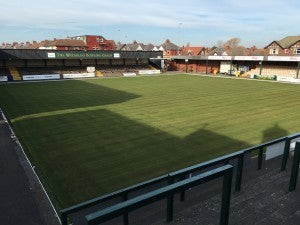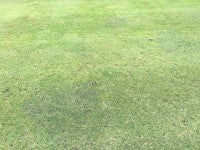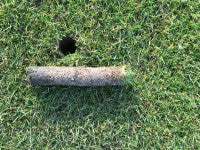Green Inspection 11th March 2016 with Mark Audin

The green was given a liquid feed to support the recovery that would be needed after invasive treatments at a difficult time of the year; the grass plant commonly has a requirement for sulphur at this stage of the growing season and this was supplied in the form of SolControl Soluble Fertiliser 24-8-12 at a rate of 6.6 kg's over the green. This was mixed with an application of SeaAction seaweed to promote beneficial soil fauna and enhance the availability of nutrients. This is a natural chelate that mixes extremely well with many formulations and can be a standard addition to many liquid applications. As we commence the growing period it is helpful to give some thought to supporting the natural soil fauna that have a beneficial relationship with the perennial species.

Toadrush is still present but it has been decided to deal with this at the end of the playing season. It benefits from a moist surface and although the green drains well, there is historic issue with thatch at the surface. This has largely been bought about because of the lack of aeration. There is a quarter inch layer of thatch that is holding moisture at the surface and creating conditions locally, which favour toadrush, hopefully a vigorous campaign of aeration over the winter should help reduce this problem though the lack of ability to aerate during the growing season is a common problem for many clubs. Undeniably aerating the green during the playing season is out of the question, any disturbance to the playing surface will result in severe criticism and with so many visitors there are few opportunities to undertake any invasive work that

Author: John Handley, Maxwell Amenity Service, Techincal Manager.
Contact John on John.Handley@maxwellamenity.co.uk.
